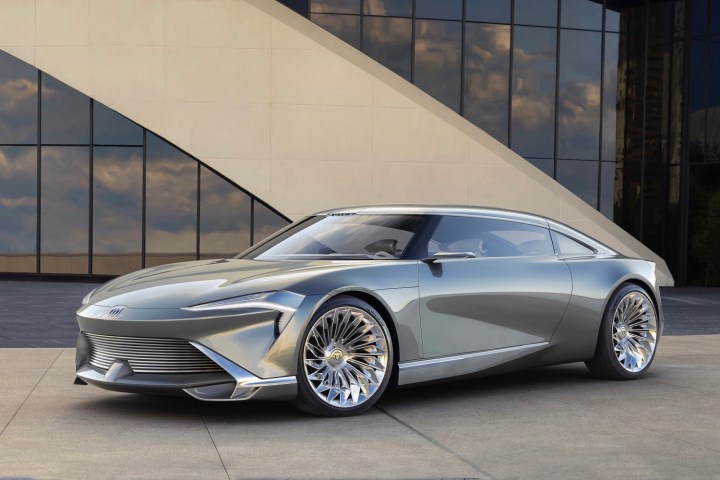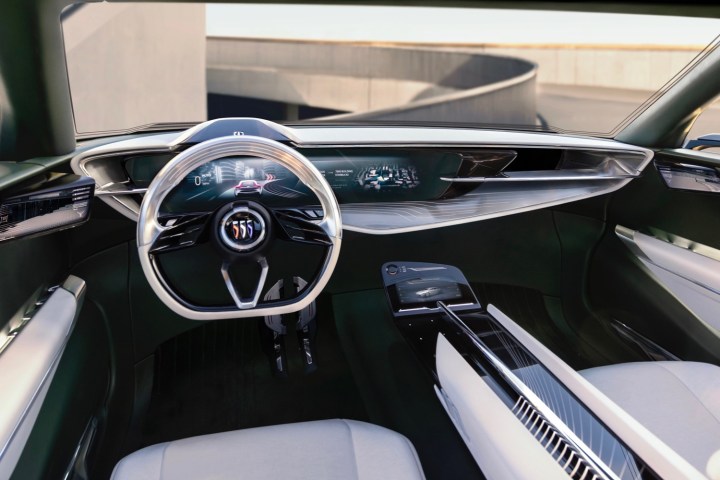Buick is going all-electric, and to preview what that future might look like, the General Motors division unveiled a sleek concept car borrowing a name from the past.
The Buick Wildcat EV concept starkly contrasts the automaker’s current lineup of staid-looking SUVs. It’s a luxury coupe, the kind of car Buick used to be known for. The low-mounted trapezoidal grille and turbine-like 18-inch wheels give the concept a slightly retro touch without drowning it in nostalgia. The concept also wears Buick’s updated logo, the first change to the logo since 1990.
Inside, multiple touchscreens cover the dashboard. Buick said the Wildcat EV also uses artificial intelligence to learn driver preferences, biometrics for security, and even has a Zen mode that combines aromatherapy, massage, and soothing lighting.

Buick first used the Wildcat name on a 1954 concept car, during the heyday of GM design. The Wildcat became one of Buick’s mid-tier models during the 1960s and was also used on a couple of subsequent concept cars. Unlike some of those previous Wildcats, the Wildcat EV won’t go into production. But Buick plans to use some of its design elements on future EVs.
The automaker confirmed Wednesday that it will make its entire lineup electric by the end of the decade. The first Buick EV production model for North America will debut in 2024. These future Buick EVs will use another name from the automaker’s past — Electra. That name first appeared for the 1959 model year and lasted until 1990. This time around, it will be what Buick calls a “series name” identifying models with an electric powertrain.

Further details on the Buick Electra EVs will be revealed closer to 2024, but we do know Buick will use the same Ultium component set as other GM brands. GM has said the Ultium name will encompass battery packs ranging from 50 kilowatt-hours to 200 kWh, with a maximum range of 400 miles and zero to 60 mph in as little as 3.0 seconds. But it’s unclear where the Buick models will sit on that spectrum.
GM previously said it aspires to eliminate tailpipes from its passenger cars by 2035, and it’s already unveiled Ultium-based EVs for its other brands. The GMC Hummer EV recently started production, the Cadillac Lyriq will follow later this year, and the Chevrolet Silverado EV is scheduled to arrive in 2024. So it’s about time Buick joined the EV party.


